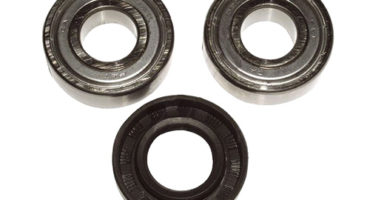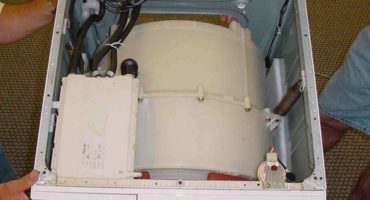Household appliances need careful maintenance, regular inspection, periodic cleaning. And washing machines are no exception. Observing the elementary rules (specified in the manufacturer's instructions) you will extend the life of your unit; the equipment will work flawlessly and fully fulfill the tasks assigned to it. At the same time, neglect of the manufacturer's recommendations, untimely cleanings lead to the appearance of various kinds of malfunctions.
The consequences can be very different: the appearance of an unpleasant odor, the failure of a tubular heater, a breakdown of the drain pump, unsatisfactory washing results. The use of hard water leads to the formation of scale on the heater. As a result of this, it is much more difficult for the device to heat water, the heating time increases - and if cleaning measures are not taken at this stage, then the heater will fail, it will not take descaling using citric acid, soda or vinegar (penny), and expensive repairs to replace failed parts. In addition, SMA are prone to the accumulation of mold and fungal spores (usually localized in sealing rubber). The remains of the air conditioner, washing powder inside the drum, dirt and small debris in the drain filter - all this significantly affects the quality of the wash. Over time, linen after washing does not look so fresh and clean. Needless to say that external pollution does not affect the operation of the machine, but it spoils the interior of the room.
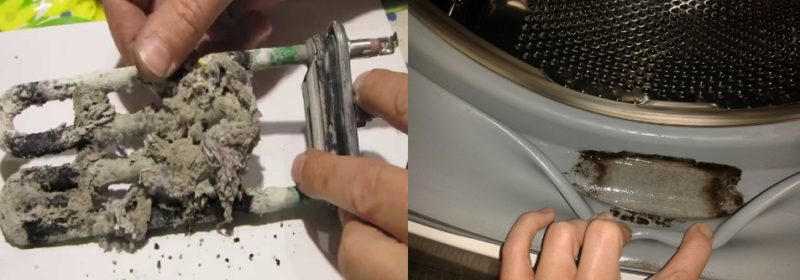
Scale and mold in the washing machine
On the modern market there are a huge number of cleaning products and other specialized cleaning agents for SMA. However, economical and experienced housewives are in no hurry to spend a lot of money and prefer to clean the washing machine with vinegar. Among the popular home remedies for treating washers is ordinary baking soda. In this article we will talk about how effectively soda and vinegar cope with pollution and how to use these products correctly.
Remove scale
Scale - calcareous deposits. They form when water is heated and settle on the metal parts of the SMA. In essence, scale is a salt of hardness. Everyone knows from the school chemistry course that in order to neutralize such compounds, it is enough to use an acid that reacts with scale and dissolves it. Ordinary 9% vinegar found in every home is such an acid.
How to descale a washing machine with vinegar
Vinegar copes well not only with calcareous deposits, but also with an unattractive smell. It perfectly kills bacteria (with vinegar they even sanitize surfaces in food enterprises). Some housewives add a glass of vinegar when washing kitchen towels.
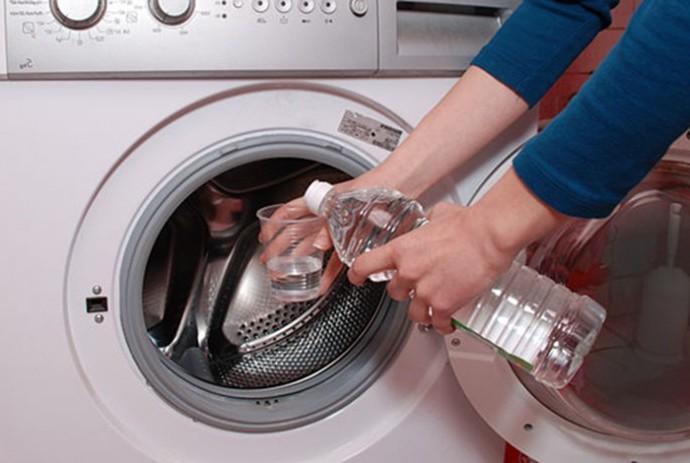
Add a glass of vinegar when washing kitchen towels - you will like the result! ”
Consider the pros and cons of vinegar (in the context of its use for cleaning SMA).
Let's start with the benefits:
- Affordable price.
- Removes scale and mold in the washing machine.
- When used correctly, it does not damage the inside of the equipment But do not use concentrated acetic acid undiluted. This may cause damage to the sealing rubber.
A detailed manual on the use of vinegar to remove hard lime deposits in the washing machine:
- Remove all items from the loading door, as they can be spoiled by acetic acid.
- Use a nine percent vinegar solution. If you have seventy percent essence, mix it with water in proportions of 1 to 7. To prevent acid from harming the delicate skin of your hands, wear protective gloves.
- Pour half a glass (125 ml) of solution in a niche for powder.
- Run the AGR in the longest running mode using high temperature.
- After the heating of the water begins, wait a moment and press the pause, then wait about 90 minutes.
- Start the AGR again and wait until the wash is finished.
- Prepare a weakly concentrated solution (mix 0.05 l of 9% vinegar with 1000 ml of water). Treat rubber and drum with this compound.
- Run the equipment in rinse mode to remove vinegar and limescale residue.
- Pull out the drain filter and rinse it.
- Wipe the drum, rubber, glass of the hatch.
Cleaning the scale of a washing machine with soda and vinegar
For best results, you can use soda and vinegar at the same time to eliminate solid deposits. You will need 500 ml of table vinegar and 2 teaspoons with a slide of baking soda.
How to act?
Such washing is carried out at idle, while vinegar is not mixed with soda: a pre-prepared mixture of soda with water is added to the loading hopper of the washing machine, and vinegar is added to the tank. After that, set the longest mode and maximum temperature. Upon completion, repeat the steps from the previous instruction, starting from step 8.
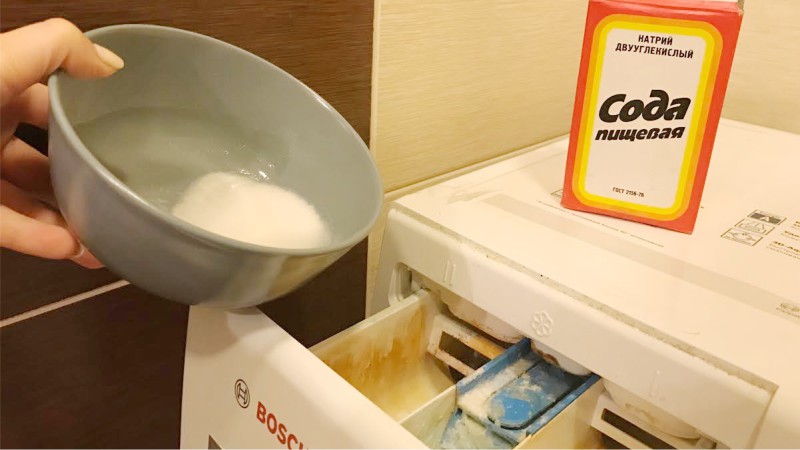
how descale the washer soda and vinegar
How to clean a washing machine from mold with soda
In sealing rubber, dirt often accumulates, mold and fungus form. Experts strongly advise to wipe the rubber dry and open the hatch door after each “big wash”, to wipe the rubber at least once a week with a damp cloth, pre-soaked in soda solution (1: 1). If the fungus has already formed, try cleaning the washing machine with soda.
To do this, dip a damp sponge in soda, gently push the cuff back and wipe the case.
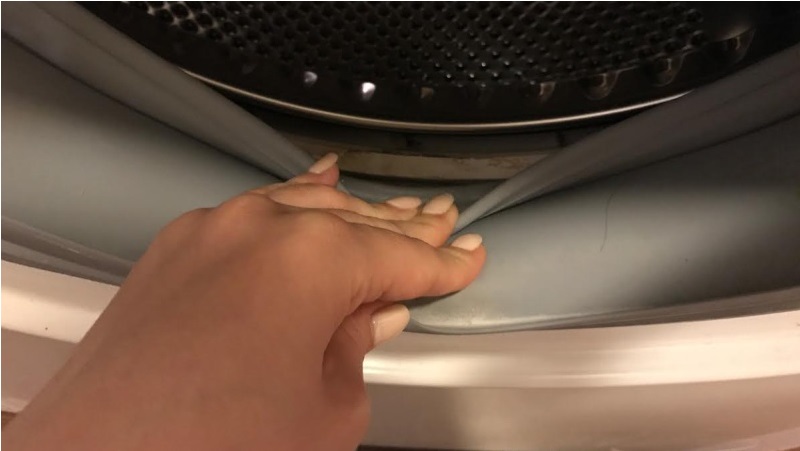
Move the rubber and wipe the metal parts of the washer with a sponge dampened in soda solution
After this, wipe the rubber cuff in the same way. Most of the dirt accumulates in the lower part of the cuff, but it is recommended to walk with a rag around the entire circumference.
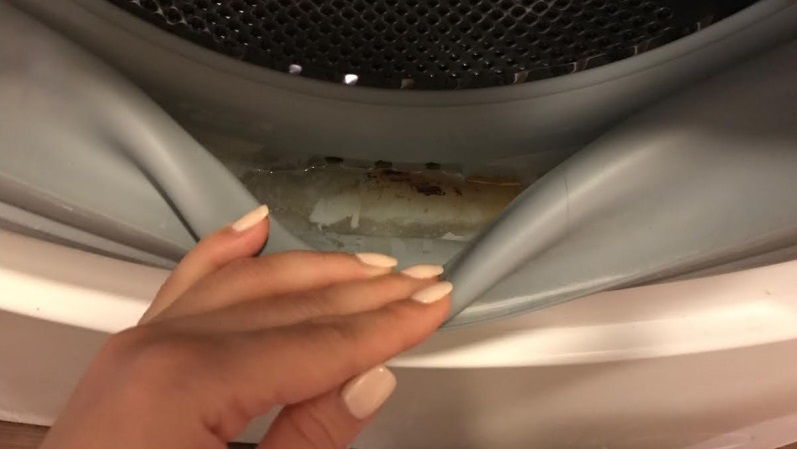
Wipe the sealing rubber of the washing machine very well with soda solution
Use a toothbrush to clean hard-to-reach areas of the rubber cuff of the washing machine. ”
You can use a toothbrush to clean hard-to-reach spots. At the end of the procedure, remove the remaining soda with a rag soaked in clean water.
Important! Do not pull the rubber too hard so as not to damage it.
Tray cleaning
The hopper is recommended to be cleaned after each wash cycle. The remains of washing powder and rinse aid accumulate in it. If you do not do this, the tray becomes dirty very quickly and you need to make a lot of effort to make it look like new (it became perfectly clean).

Wipe the tray after each wash cycle to keep it clean at all times.
To remove the tray from the washing machine, find the manufacturer's instructions. It details how to do this. If you accidentally lost such a guide, do not panic - almost all the instructions are on the Internet, just drive the brand and model of your washing machine into the search engine.
In many models (cars from Bosch, Beco, Samsung, etc.), to remove the tray, you need to press the blue (or green) key (located in the air conditioning compartment) and pull the tray towards you. In other models (for example, Indesit) there is no such button. To remove the tray, simply pull it toward you.
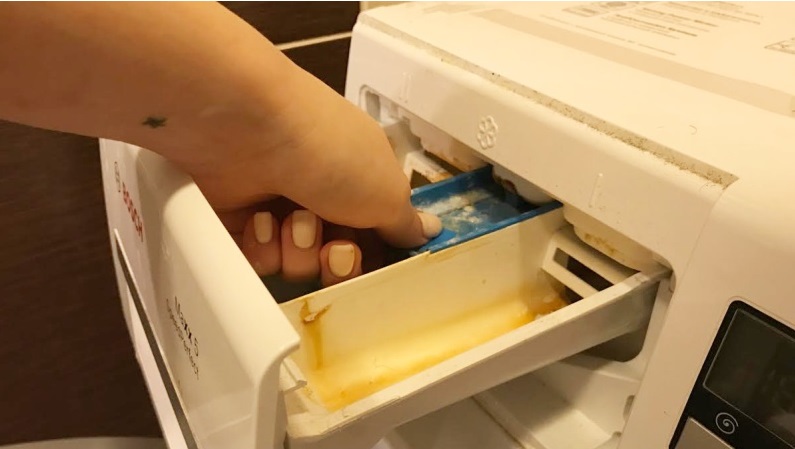
To remove the hopper, press the blue button and pull the container towards you
It is not so easy to clean the hopper from obsolete contaminants. Some SMA models have a tray with a complex configuration, with a large number of recesses and protruding parts. Sometimes the tray is even covered with a layer of rust.
If you are dealing with old dirt, remove the tray and pre-soak it in a solution of warm water and vinegar for a day. Choose a suitable basin so that the tray is fully immersed in it. After that, just wipe the hopper slightly with a sponge and rinse it with running water. It will shine.
If you can’t or don’t want to wait so much, and the hopper is very dirty, you can use a solution of soda and vinegar. To do this, extinguish the baking soda with vinegar and apply the mixture on the walls of the powder receptacle, soak for a couple of hours and eliminate plaque with a brush, rinse the tray very well and from all sides with tap water.
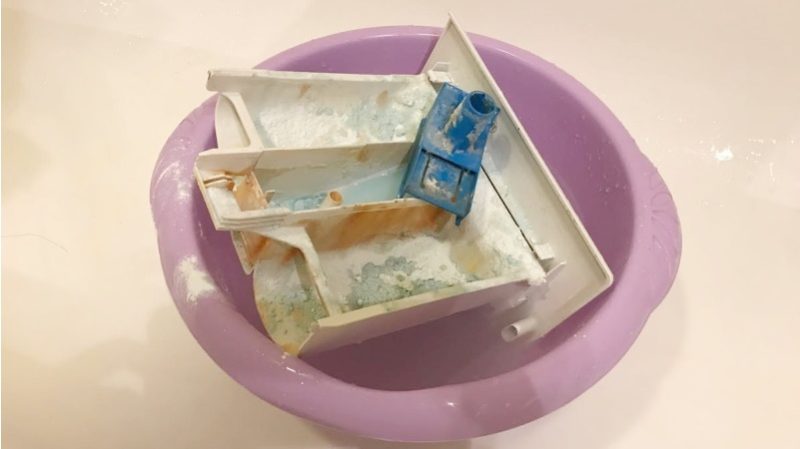
Cleaning the loading hopper of the washing machine with soda and vinegar
Cleaning the outside of the washing machine
Usually people wipe the machine with a damp cloth, considering this measure sufficient. But this is far from the case, and after a certain period of time, the housewives notice that the appearance of the washing machine is in a deplorable state, it takes a lot of effort to clean up, since the remnants of the powder, rinses, dirt densely settle on the case. If the washing machine is installed in the kitchen, a layer of fat and soot is added to these “joys”.

Cleaning the outside of the washing machine
How to effectively deal with such pollution? Everything is simple. As with internal contamination, you can use a solution of vinegar and baking soda. Dampen a sponge or rag in these products and wipe the control panel, front of the washer, back cover, and side walls.
Important! Wipe the control panel with a damp (not very wet) cloth so as not to damage the electronics.
To summarize. Vinegar and soda - the cheapest and most popular washing machine cleaning methods. They are used for both internal and external cleaning.
We also recommend reading the article “How to remove bad odor from a washing machine«.


